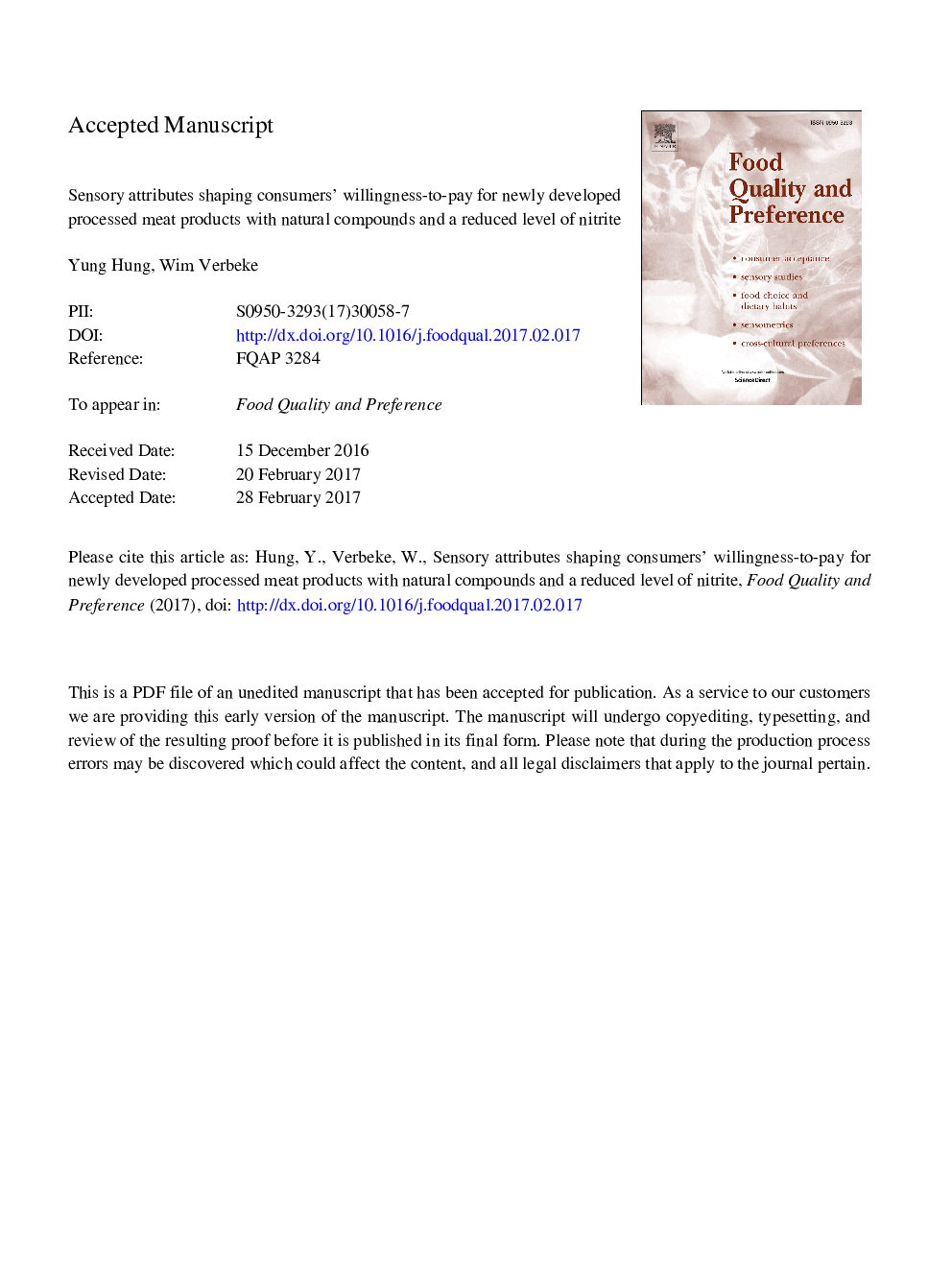| Article ID | Journal | Published Year | Pages | File Type |
|---|---|---|---|---|
| 8838406 | Food Quality and Preference | 2018 | 44 Pages |
Abstract
While innovation to improve processed meat products (PMPs) is promising, sensory characteristics remain the key factor shaping consumers' preference and purchase decisions. These two studies employed a non-hypothetical and novel analytical approach to study how sensory attributes influence consumers' willingness-to-pay (WTP) for new PMPs with added natural compounds and a reduced level of nitrite. Vickrey's second-price experimental auctions were organised with conventional and the new PMPs. Study 1 was in Belgium (n = 208) with cooked sausage; Study 2 was in the Netherlands (n = 107) with cooked ham. Elastic net (EN) regularised regression models and regression trees were used to assess determinants of WTP under data constraints. Overall, WTP was positively influenced by a higher overall liking, appearance familiarity and a better colour, and negatively influenced by a stronger experience of aftertaste and darker colour. The order effect of tasting and information provision was opposite in the two studies. The study with cooked sausage also showed a positive effect of a better texture and taste, and a negative effect of a too weak intensity of meat taste on WTP. The study with cooked ham indicated a positive effect of a better smell, stronger salty taste and less dry texture, and a negative effect of a too strong intensity of meat smell on WTP. Whereas Just-About-Right (JAR) scales are widely applied in consumer research to identify optimal sensory attribute levels, both studies revealed that JAR ratings do not necessarily translate into a higher WTP. These studies yield recommendations for consumer-driven food product research and development.
Keywords
Related Topics
Life Sciences
Agricultural and Biological Sciences
Food Science
Authors
Yung Hung, Wim Verbeke,
